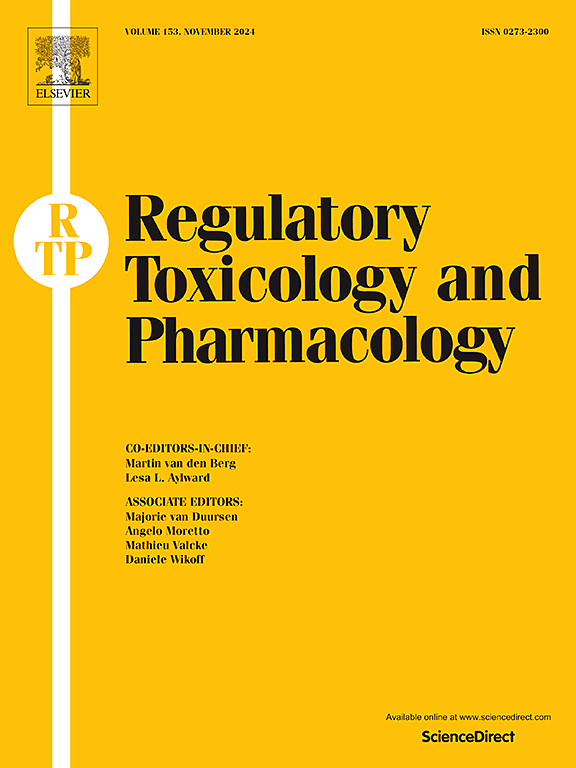对新型抗疟药物进行量身定制的非临床安全性测试的重要性:行业最佳实践。
IF 3
4区 医学
Q1 MEDICINE, LEGAL
引用次数: 0
摘要
疟疾是一种使人衰弱的急性寄生虫病。2022 年,全球疟疾病例达 2.49 亿例,造成 60.8 万人死亡,其中 76% 为 5 岁以下儿童。这种疾病的特殊性(复发导致再次治疗,多个器官系统受到影响)、特定的临床治疗方案、依从性差以及受影响人群的多样性(主要是儿科、育龄妇女、孕妇和哺乳期妇女),往往使得标准检测方法不充分,而量身定制的安全性评估更为合适。我们根据公司的经验为抗疟药物的非临床安全性评估提供最佳实践建议,重点是小分子药物,因为它们代表了该疾病的大多数候选药物。我们将重点放在重复剂量毒性研究的具体测试注意事项上,包括组合毒性评估,因为新药治疗方案通常会考虑缩短治疗时间,以提高依从性(即 1 天),并通过组合化合物来提高疗效和限制潜在的耐药性。由于目标人群的原因,生殖、发育和幼年毒性研究的时间可能早于其他小分子药物的一般测试路线图。总之,本文提出的主要建议应能使开发路径更有效、更高效,同时保护临床试验参与者和患者。本文章由计算机程序翻译,如有差异,请以英文原文为准。
Importance of tailored non-clinical safety testing of novel antimalarial drugs: Industry best-practice
Malaria is an acute, debilitating parasitic illness. There were 249 million cases of malaria in 2022, resulting in 608,000 deaths globally, 76% of which were children ≤5 years. The unique nature of this disease (recurrences leading to re-treatments and numerous organ systems affected), specific clinical treatment regimens, poor compliance, and diversity of affected populations (predominantly pediatrics, women of childbearing potential, pregnant and lactating women), often makes standard testing approaches inadequate, and tailor-made safety assessments are more appropriate.
We provide best practice recommendations based on company experience for the non-clinical safety assessment of antimalarial drugs, with a focus on small molecules since they represent the majority of drug candidates for this illness. We focus on specific testing considerations for repeat dose toxicity studies, including combination toxicity assessments, since new drug treatment regimens typically foresee short treatment durations to improve compliance (i.e., 1 day) with combinations of compounds to improve efficacy and limit potential resistance. Due to the target population, the timing of reproductive, developmental, and juvenile toxicity studies may be earlier than general testing roadmaps for other small molecule drugs.
In conclusion, key recommendations presented should enable a more effective and efficient development path whilst protecting clinical trial participants and patients.
求助全文
通过发布文献求助,成功后即可免费获取论文全文。
去求助
来源期刊
CiteScore
6.70
自引率
8.80%
发文量
147
审稿时长
58 days
期刊介绍:
Regulatory Toxicology and Pharmacology publishes peer reviewed articles that involve the generation, evaluation, and interpretation of experimental animal and human data that are of direct importance and relevance for regulatory authorities with respect to toxicological and pharmacological regulations in society. All peer-reviewed articles that are published should be devoted to improve the protection of human health and environment. Reviews and discussions are welcomed that address legal and/or regulatory decisions with respect to risk assessment and management of toxicological and pharmacological compounds on a scientific basis. It addresses an international readership of scientists, risk assessors and managers, and other professionals active in the field of human and environmental health.
Types of peer-reviewed articles published:
-Original research articles of relevance for regulatory aspects covering aspects including, but not limited to:
1.Factors influencing human sensitivity
2.Exposure science related to risk assessment
3.Alternative toxicological test methods
4.Frameworks for evaluation and integration of data in regulatory evaluations
5.Harmonization across regulatory agencies
6.Read-across methods and evaluations
-Contemporary Reviews on policy related Research issues
-Letters to the Editor
-Guest Editorials (by Invitation)

 求助内容:
求助内容: 应助结果提醒方式:
应助结果提醒方式:


